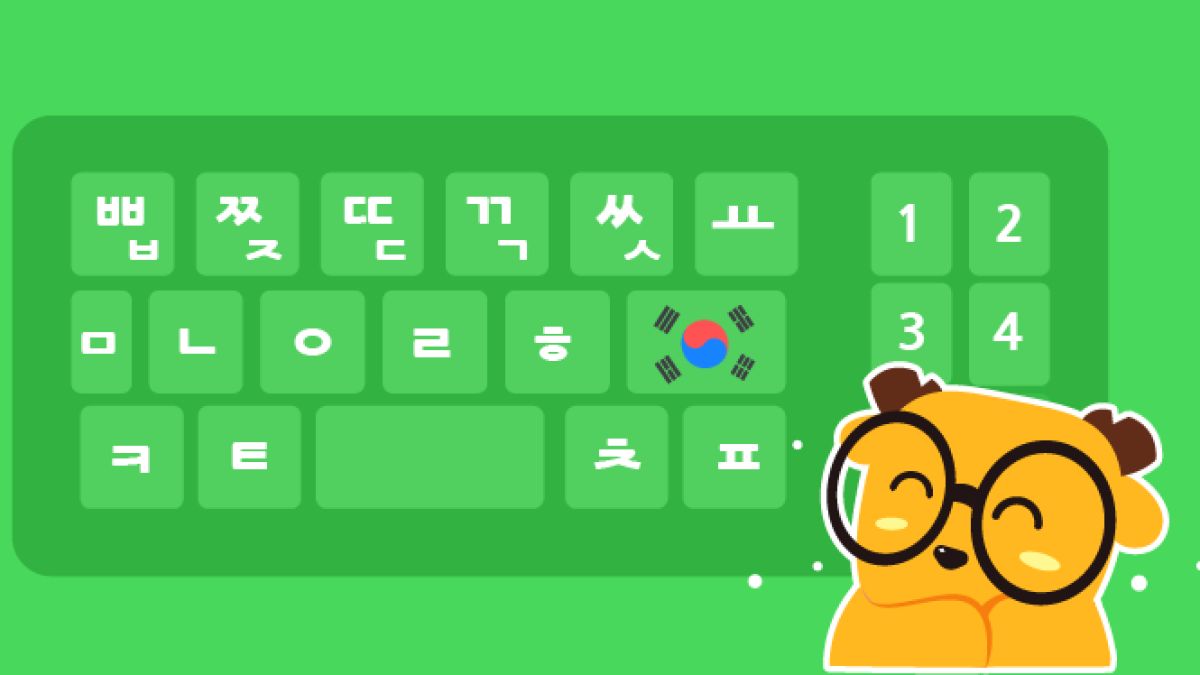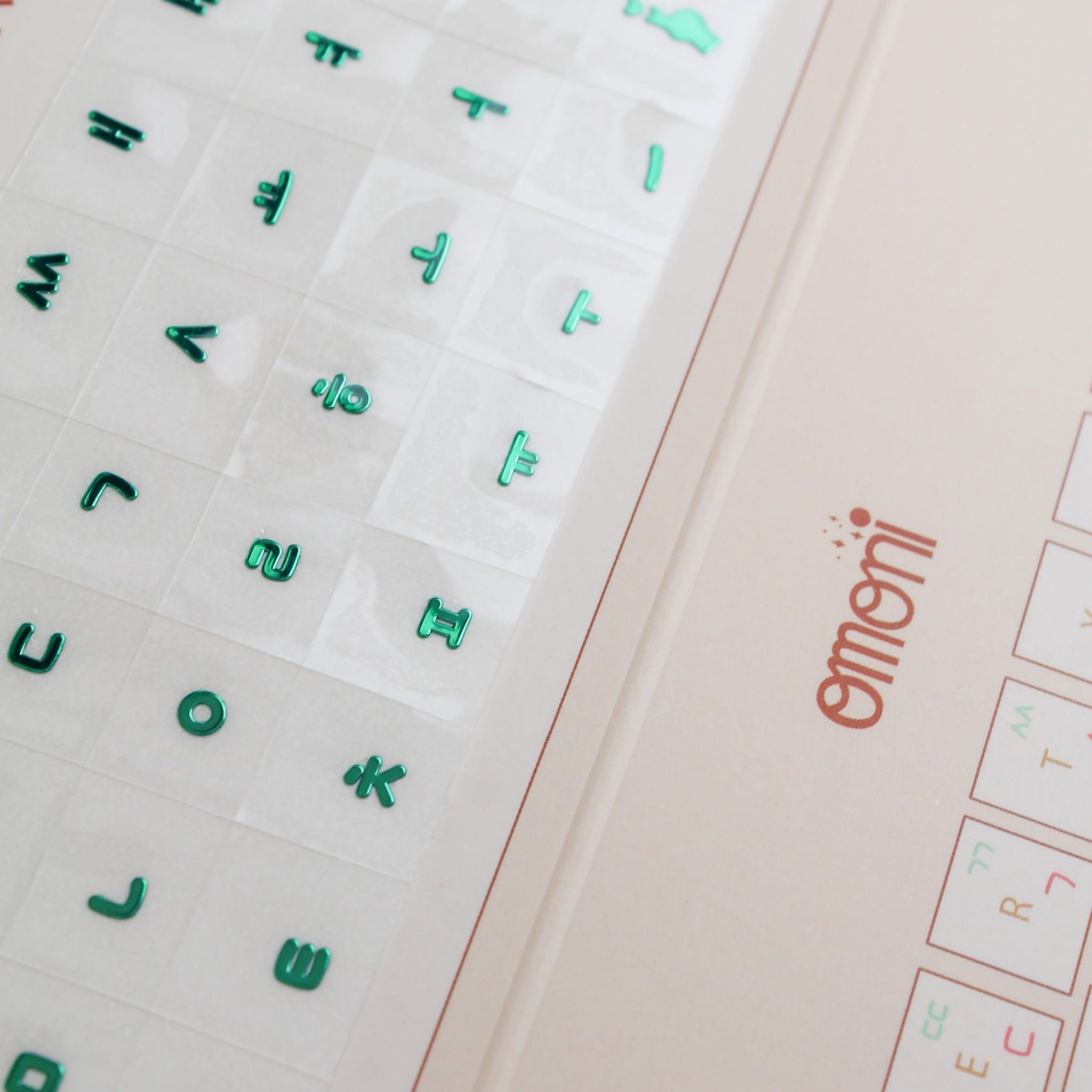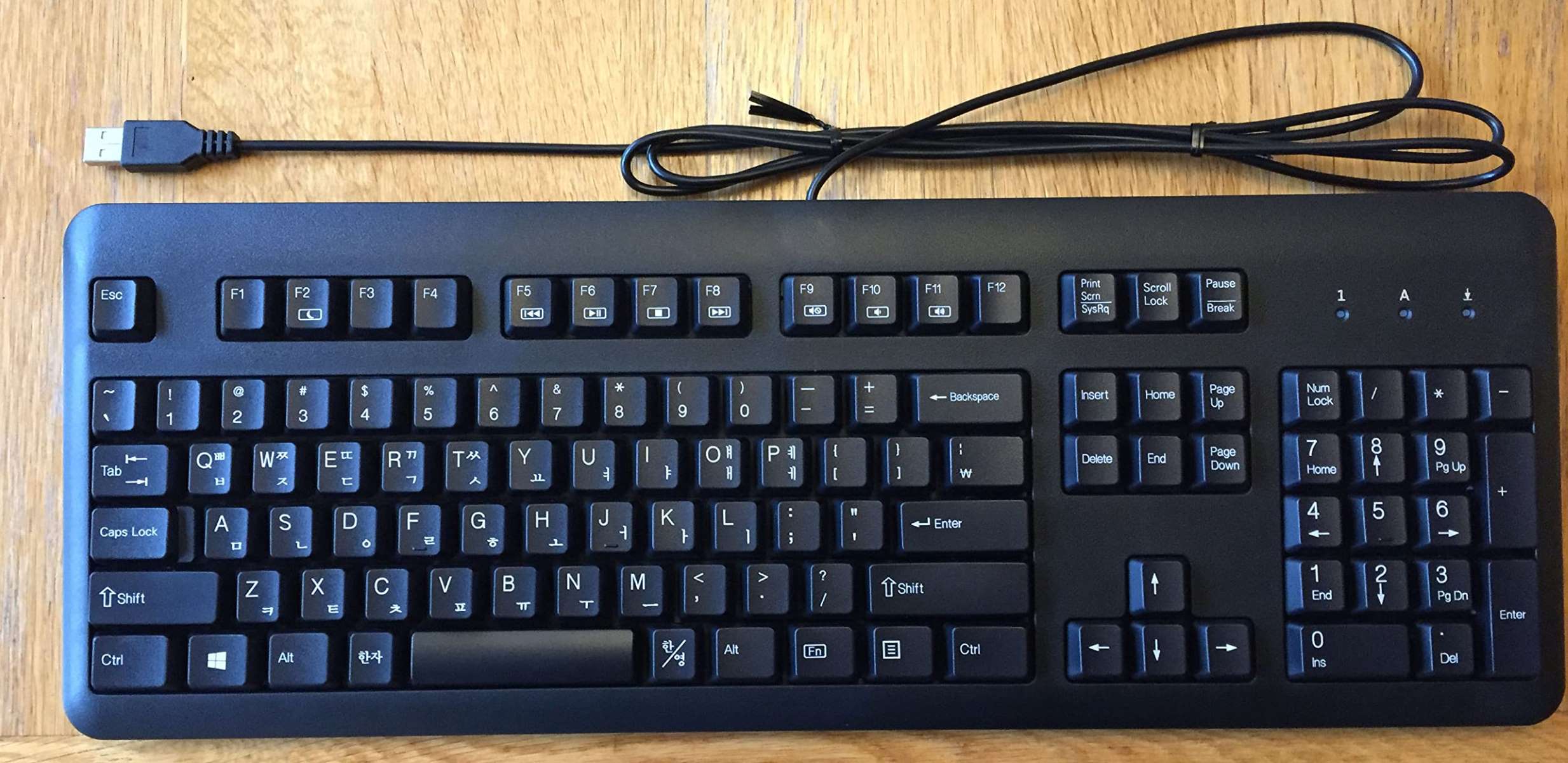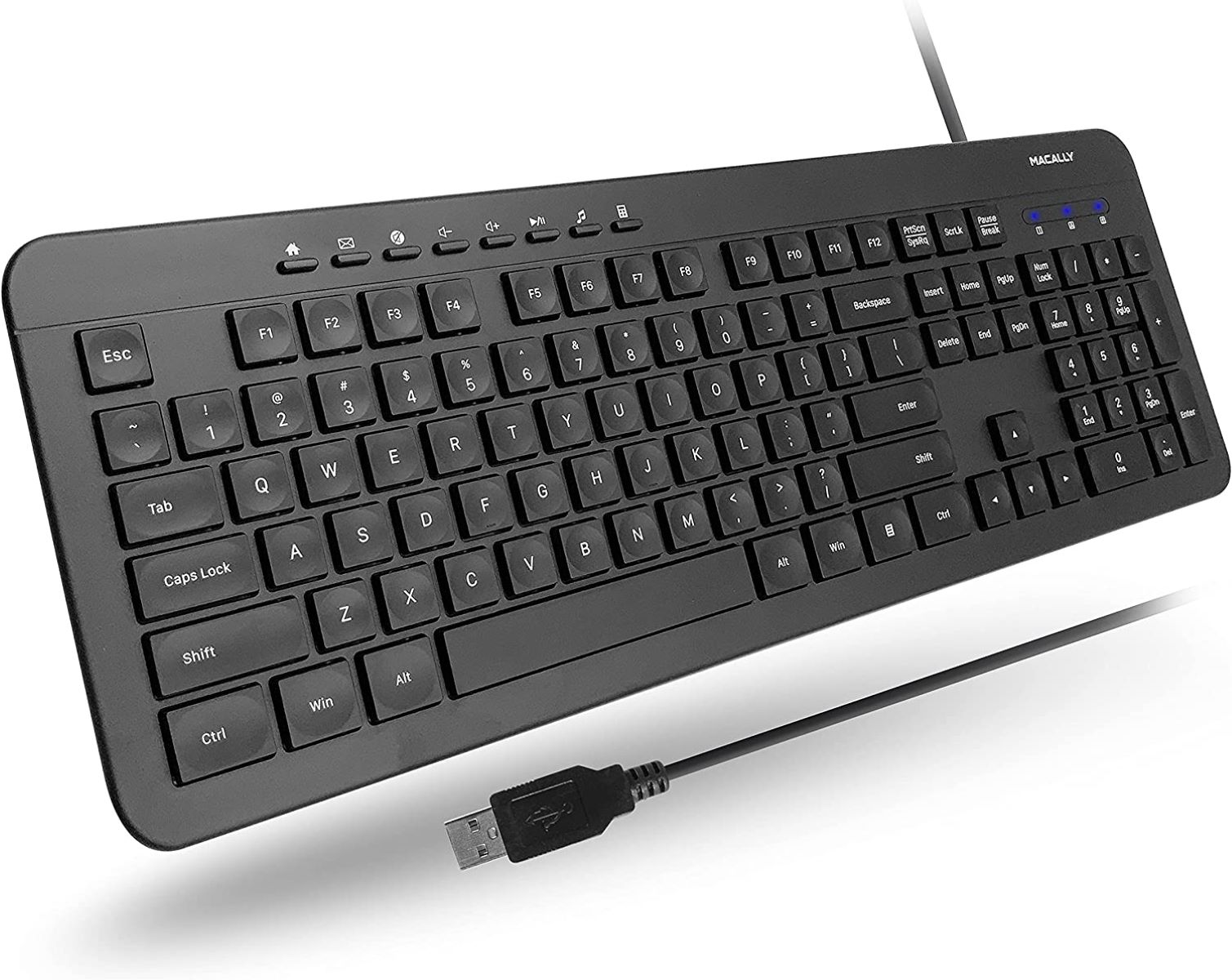Introduction
Welcome to the fascinating world of the Korean keyboard! Whether you’re learning the Korean language, working on translations, or simply want to type in Korean, understanding how to use a Korean keyboard is a valuable skill to have. With its unique layout and special characters, a Korean keyboard may seem intimidating at first, but fear not – with a little practice, you’ll be typing like a pro in no time.
In this article, we’ll guide you through the process of setting up a Korean keyboard on your computer and teach you the essentials of typing in Korean. We’ll also provide you with some handy shortcuts and additional tips to enhance your Korean typing experience. So, let’s dive right in and discover the world of the Korean keyboard!
Before we delve into the technical aspects, it’s important to note that learning how to use a Korean keyboard not only allows you to type in Korean but also enables you to fully immerse yourself in the Korean language and culture. Whether you’re communicating with friends and family, studying Korean literature, or exploring the vibrant world of K-dramas and K-pop, a Korean keyboard opens up a whole new realm of possibilities.
So, whether you’re a beginner or an experienced typist, this guide will provide you with the necessary knowledge and tools to effectively use a Korean keyboard. Let’s get started!
Understanding a Korean Keyboard
Before we jump into using a Korean keyboard, let’s take a moment to understand its layout and key differences from a standard QWERTY keyboard. The most notable distinction is that a Korean keyboard is based on the Korean writing system, known as Hangul.
A Korean keyboard consists of three main parts: the consonant keys, vowel keys, and final consonant keys. The consonant keys are arranged in a grid-like pattern, with each key representing a specific consonant sound in Hangul. Similarly, the vowel keys correspond to the different vowel sounds in Hangul.
In addition to the consonants and vowels, a Korean keyboard also includes keys for special characters, punctuation marks, and numerals. These keys are typically located on the upper row, similar to their placement on a standard QWERTY keyboard.
One significant feature of the Korean keyboard is the ability to combine consonants and vowels to form syllables. Each syllable is represented by a single keypress, making the Korean typing experience efficient and streamlined.
To fully utilize the capabilities of a Korean keyboard, it’s essential to understand how the Hangul writing system works. Hangul consists of syllable blocks, composed of one initial consonant, one vowel, and optionally, a final consonant. By mastering the combination of these elements, you’ll be able to form syllables and write in Korean with ease.
Furthermore, it’s important to note that a Korean keyboard also provides the option to switch between Hangul and English input modes. This allows you to seamlessly switch between typing in Korean and English without the need for external software or language settings.
Now that we have a basic understanding of the layout and functionality of a Korean keyboard, let’s move on to setting up a Korean keyboard on your computer.
Setting Up a Korean Keyboard on a Computer
Setting up a Korean keyboard on your computer is a straightforward process that can be done in just a few simple steps. Whether you’re using a Windows or Mac operating system, we’ll guide you through the process for both platforms.
Windows:
To set up a Korean keyboard on Windows, follow these steps:
- Go to the “Start” menu and select “Settings.”
- Click on “Time & Language” and then select “Language” from the left sidebar.
- Under the “Preferred languages” section, click on “Add a language.”
- Search for “Korean” in the language list and select it.
- Click on “Korean” and then click “Options.”
- Under the “Keyboards” section, click on “Add a keyboard.”
- Select “Korean” from the list of available keyboards.
- Click on “Save” to apply the changes.
That’s it! You’ve successfully set up a Korean keyboard on your Windows computer. To switch between the English and Korean keyboards, you can use the keyboard shortcut “Left Alt + Shift.”
Mac:
Setting up a Korean keyboard on a Mac is equally simple:
- Go to the Apple menu and select “System Preferences.”
- Click on “Keyboard” and then select the “Input Sources” tab.
- Click on the “+” button at the bottom left to add a new input source.
- Search for “Korean” in the search bar and select it.
- Select “Korean – Standard” or “Korean – 2 Set” from the list of available keyboards.
- Click on “Add” to add the Korean keyboard to your input sources.
That’s all you need to do! You can now switch between the English and Korean keyboards on your Mac by clicking on the language icon in the menu bar.
Now that you’ve successfully set up a Korean keyboard on your computer, let’s move on to the next step: typing in Korean.
Typing in Korean
Now that you have set up a Korean keyboard on your computer, it’s time to start typing in Korean! Although the layout and characters may seem unfamiliar at first, with some practice, you’ll be able to type Korean text with ease.
Here are the key steps to follow when typing in Korean:
Step 1: Switch to the Korean Keyboard
To begin typing in Korean, make sure you have switched to the Korean input mode on your computer. Refer to the previous section on how to switch between English and Korean keyboards based on your operating system.
Step 2: Compose Syllables
As mentioned earlier, Hangul is composed of syllables formed by combining consonants and vowels. To type a syllable, press the corresponding consonant key followed by the vowel key. The syllable will appear on the screen as you type.
For example, to type “안녕하세요” (which means “Hello”), you would press the keys for “ㅇ” (the first consonant sound in “안”), “ㅏ” (the vowel sound of “안”), “ㄴ” (the next consonant sound in “안녕”), and so on.
Step 3: Combine Syllables
If a syllable has a final consonant, you can type it by pressing the designated key for the final consonant sound after composing the initial consonant and vowel. However, not all syllables have a final consonant.
For example, to type “한글” (which means “Hangul”), you would press the keys for “ㅎ” (the first consonant sound in “한”), “ㅏ” (the vowel sound of “한”), and “ㄴ” (the final consonant sound of “한”).
Step 4: Practice and Familiarize Yourself
Like any new skill, typing in Korean requires practice to become proficient. Spend some time typing simple words, sentences, and phrases to familiarize yourself with the keyboard layout and to improve your typing speed. The more you practice, the more natural and effortless typing in Korean will become.
It’s also helpful to use online Korean keyboards or typing practice tools that provide exercises and feedback on your typing accuracy and speed. These resources can assist you in honing your skills.
With regular practice and patience, you’ll soon find yourself typing in Korean confidently and fluently.
Next, let’s explore some common Korean keyboard shortcuts that can make your typing experience even more efficient.
Common Korean Keyboard Shortcuts
Learning and utilizing keyboard shortcuts can greatly enhance your productivity and efficiency when typing in Korean. These shortcuts allow you to perform various actions quickly and seamlessly. Here are some common Korean keyboard shortcuts to help streamline your typing experience:
- Ctrl + Space: This shortcut allows you to switch between the English and Korean keyboard input modes. It is handy when you need to switch languages frequently.
- Shift + Space: This shortcut allows you to toggle between full-width and half-width characters. It comes in handy when you need to adjust the spacing or formatting of your text.
- Alt + ;: This shortcut inputs the Korean middle dot symbol (·), often used as a separator between words or syllables in Korean text.
- Shift + Right Alt: This shortcut enables you to switch between the different input methods within the Korean keyboard. It allows you to easily access additional characters and symbols specific to the Korean language.
- Alt + Shift + -: This shortcut types the Korean em dash (—) symbol, commonly used in Korean writing for emphasis or as a punctuation mark.
- Ctrl + Alt + Delete: This shortcut opens the Task Manager on Windows, allowing you to end programs or processes that may be causing issues.
These are just a few examples of the numerous keyboard shortcuts available on a Korean keyboard. It’s worth exploring further and experimenting with different shortcuts to find those that suit your typing style and needs.
Additionally, many Korean typing programs and online resources offer their own set of specialized shortcuts to further optimize your typing speed and accuracy. These shortcuts can include options for autocorrect, automatic spacing, word recommendations, and more.
By familiarizing yourself with these shortcuts and incorporating them into your typing routine, you’ll be able to save time and navigate the Korean keyboard with ease.
Now that you’re equipped with some handy shortcuts, let’s explore a few additional tips and tricks to enhance your Korean typing experience.
Additional Tips and Tricks
To further enhance your Korean typing skills, here are some additional tips and tricks to optimize your productivity and improve your overall experience:
- Practice Regularly: Consistency is key to mastering any skill. Set aside dedicated time to practice typing in Korean regularly. The more you practice, the more familiar you will become with the Korean keyboard layout and the faster your typing speed will improve.
- Use Online Resources: Explore online resources that provide typing exercises and games specifically designed for Korean learners. These resources can help you practice your typing skills while also reinforcing your understanding of the Korean language.
- Customize Keyboard Layout: Some operating systems allow you to customize the keyboard layout based on your preferences. Consider adjusting the layout to match your typing style or to make it more comfortable for your fingers.
- Utilize Prediction and Autocorrect Functions: Many Korean typing software and apps offer predictive text and autocorrect features. Take advantage of these functions to save time and reduce typing errors.
- Learn Common Keyboard Shortcuts: In addition to the Korean keyboard shortcuts mentioned earlier, familiarize yourself with general keyboard shortcuts, such as copy (Ctrl+C), paste (Ctrl+V), and undo (Ctrl+Z). These shortcuts can be used across various applications and will contribute to your overall typing speed and efficiency.
- Refer to Language Resources: When typing in Korean, refer to Korean language resources, such as dictionaries and grammar guides, to ensure accurate spelling and proper language usage. This will not only improve your typing accuracy but also enhance your overall knowledge of the Korean language.
Remember, learning how to type in Korean is a gradual process. Be patient with yourself and celebrate small victories along the way. With regular practice, you’ll gradually build fluency and confidence in typing Korean text.
Now that you have a range of tips and tricks at your disposal, it’s time to put them into practice and start typing like a pro!
Conclusion
Congratulations! You have now acquired the knowledge and skills to effectively use a Korean keyboard. Understanding the layout, setting up the keyboard on your computer, and mastering the art of typing in Korean are important steps toward fully immersing yourself in the Korean language and culture.
By practicing regularly, familiarizing yourself with keyboard shortcuts, and utilizing additional tips and tricks, you can significantly enhance your Korean typing speed and accuracy. Remember to be patient and persistent – proficiency in typing Korean will come with time and dedication.
Having the ability to type in Korean opens up a world of possibilities. Whether you’re communicating with Korean friends and family, studying Korean literature, or enjoying the vibrant world of K-dramas and K-pop, being able to type in Korean will enhance your experience and deepen your connection with the language and culture.
So, don’t hesitate to start exploring the Korean keyboard and putting your newfound skills to use. Embrace the exciting journey of typing in Korean, and remember to have fun along the way!
Happy typing!

























